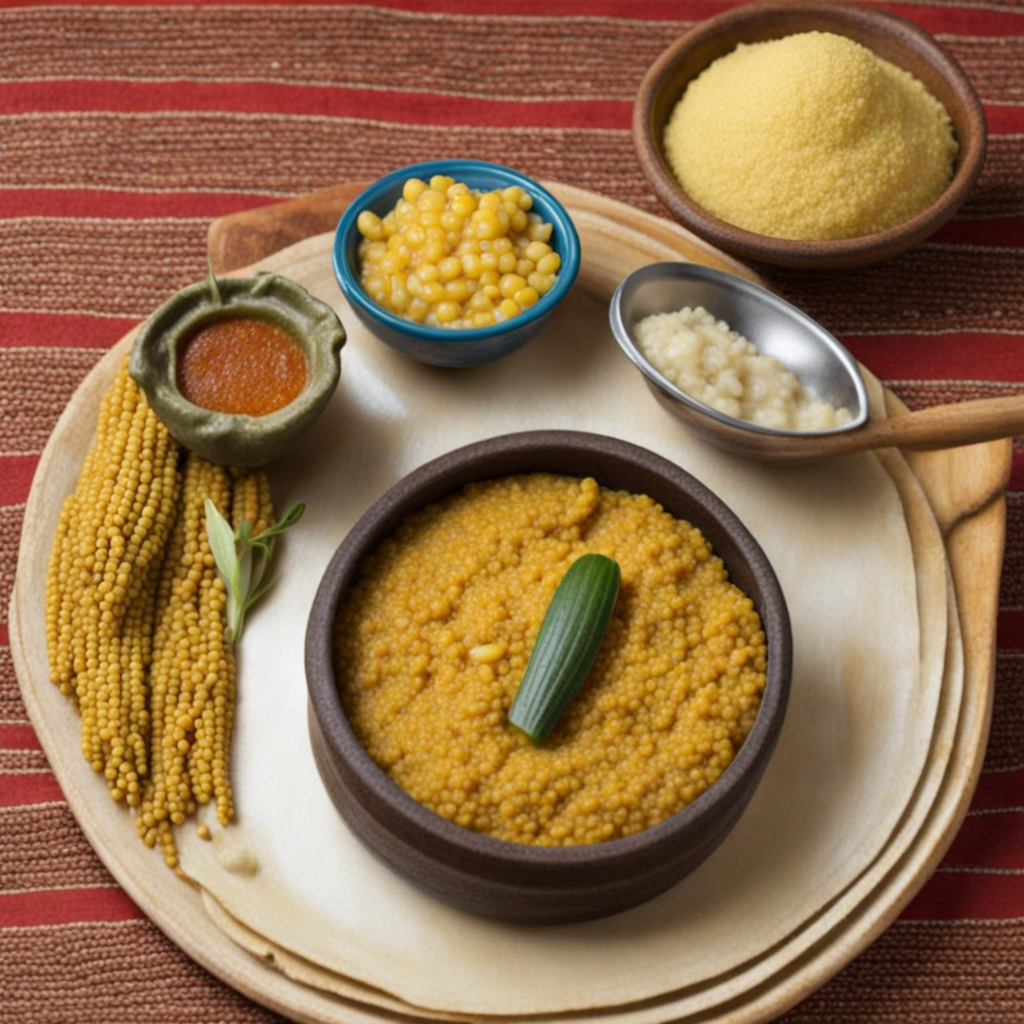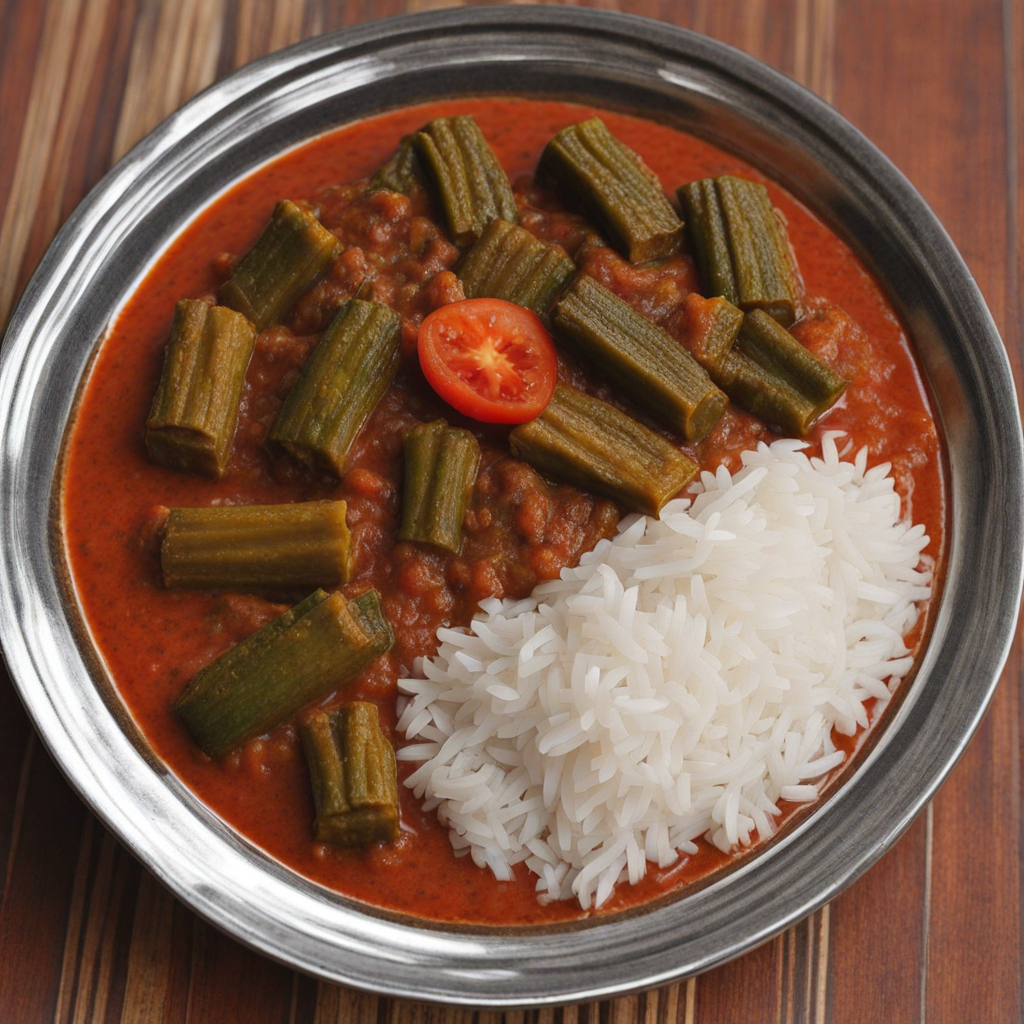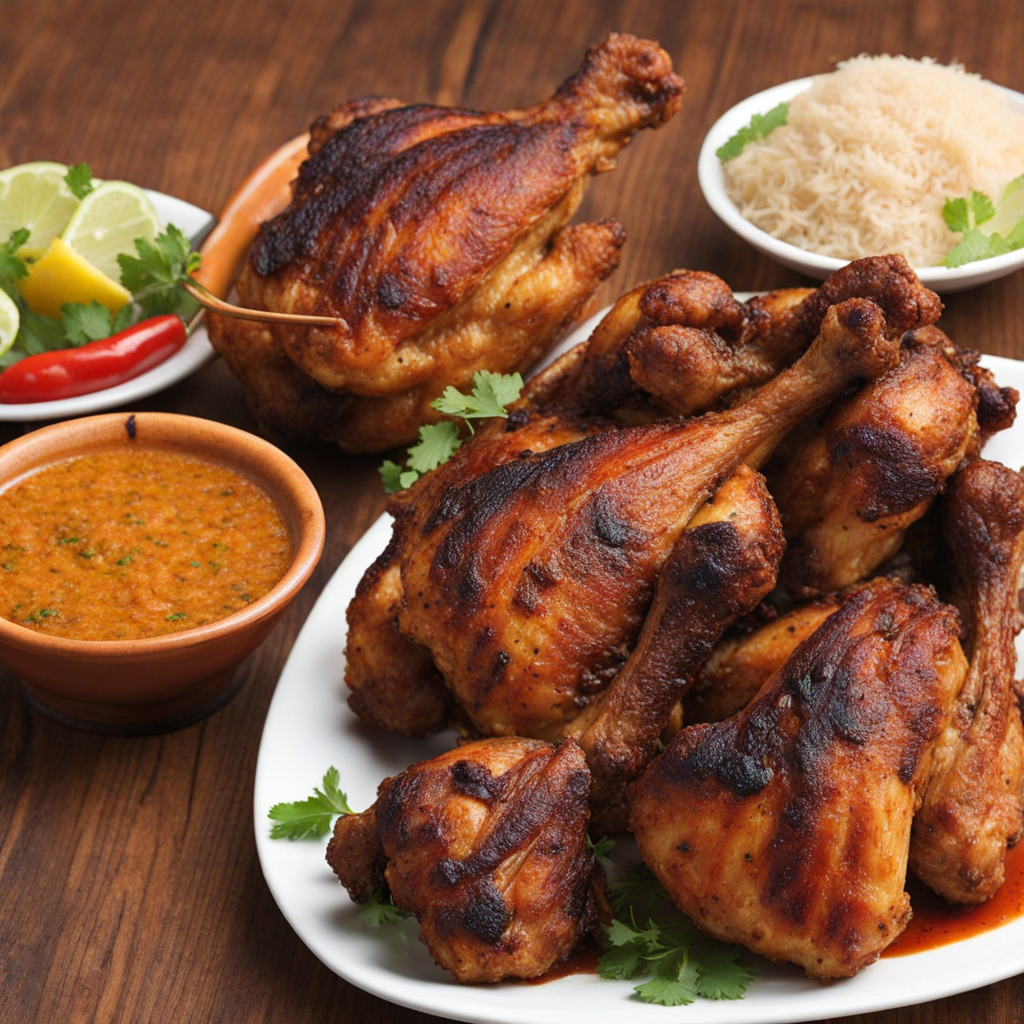Tô
Tô is a traditional dish from Burkina Faso that embodies the essence of West African cuisine. This versatile staple is made from a variety of flours, most commonly millet, sorghum, or corn, which are mixed with water to create a smooth, thick, and stretchy consistency. The dough-like formation is then shaped into balls or served as a mound, typically enjoyed alongside a rich sauce or soup. Tô is known for its neutral flavor, which allows it to absorb the spices and flavors of accompanying dishes, making it an excellent base for a wide range of culinary pairings. One of the most delightful aspects of Tô is how it is often served with a flavorful sauce made from vegetables, meat, or fish. These sauces can be rich and hearty, featuring ingredients like peanuts, okra, or tomatoes, and are typically seasoned with local spices that give each dish its unique character. When enjoyed together, the Tô and sauce create a satisfying meal that is both filling and nourishing. The dish is often eaten communally, with diners using their hands to scoop up the Tô and sauce, creating a vibrant and social dining experience. For those looking to explore new tastes, Tô offers a unique gastronomic journey that reflects the culture and traditions of Burkina Faso. Its texture is chewy and satisfying, while its ability to complement bold flavors makes it a perfect introduction to the region's culinary landscape. Whether enjoyed at a family gathering or in a bustling market, Tô is a dish that invites everyone to partake in the rich flavors and communal spirit of West African dining.
How It Became This Dish
The History of Sa: A Culinary Gem from Burkina Faso Burkina Faso, a landlocked country in West Africa, is renowned for its rich tapestry of cultures, languages, and traditions. Among its culinary offerings, one dish stands out as a symbol of cultural identity and communal spirit: Sa. This traditional Burkinabé dish, though lesser known in the global culinary scene, holds profound significance in the daily lives of the people of Burkina Faso. Origins of Sa The origins of Sa can be traced back to the indigenous farming communities of Burkina Faso, where agriculture has been the backbone of survival and sustenance for centuries. The primary ingredients in Sa—millet or sorghum, vegetables, and sometimes meat—reflect the agrarian lifestyle of the Burkinabé people. These grains have been cultivated in the region for thousands of years, with evidence of their domestication dating back to ancient times. The preparation of Sa is not merely a culinary act; it embodies the essence of communal living. Traditionally, it was prepared in large quantities during community gatherings and celebrations, reflecting the values of sharing and hospitality that are integral to Burkinabé culture. As the dish evolved, it became a staple food that could be served during both everyday meals and special occasions. Cultural Significance Sa is more than just food; it is a cultural artifact that encapsulates the spirit of Burkina Faso. It symbolizes unity, as it is often enjoyed in communal settings where family and friends gather. The dish is typically served in a large bowl, allowing everyone to partake from the same source, which fosters a sense of togetherness. In many Burkinabé communities, the preparation of Sa involves intricate rituals. Women, who are traditionally the keepers of culinary knowledge, play a pivotal role in its making. They share recipes and techniques across generations, ensuring that the art of preparing Sa is passed down. This aspect of the dish highlights the importance of women in preserving cultural heritage and their central role in family structures. Moreover, Sa can be seen as a reflection of the agricultural calendar and seasonal changes. During harvest time, Sa may be prepared with fresh vegetables and herbs, showcasing the bounty of the land. Conversely, during the dry season, when resources are scarce, the dish may incorporate preserved ingredients, demonstrating the Burkinabé people's resilience and adaptability. Ingredients and Preparation The core ingredients of Sa typically include millet or sorghum, which are staples in the Burkinabé diet. Millet, known for its nutritional value and resilience in arid climates, is often ground into flour and used to make a thick porridge. This porridge serves as the base of Sa and can be complemented with various vegetables such as okra, tomatoes, and leafy greens, as well as proteins like fish, chicken, or goat. The preparation of Sa is a labor-intensive process that involves several steps. First, the grains are often soaked, ground, and cooked to achieve the desired consistency. The vegetables and proteins are then added to create a hearty and flavorful dish. The cooking process is usually conducted over an open flame, lending a smoky flavor to the final product. Evolution Over Time As Burkina Faso has faced numerous challenges, including colonization, drought, and economic fluctuations, the evolution of Sa reflects the resilience of its people. During the colonial era, the introduction of new ingredients and cooking methods began to influence traditional recipes. While Sa remained a staple, it adapted to include imported spices and cooking techniques, leading to regional variations. In contemporary Burkina Faso, Sa continues to serve as a beloved dish, though modernization and globalization have started to shift food habits. Urbanization has led to a growing demand for convenience foods, yet many families continue to cherish the preparation of Sa as a connection to their roots. This juxtaposition illustrates the tension between preserving cultural identity and embracing modernity. Today, Sa is not only a household staple but also a source of pride for Burkinabé people. Efforts are being made to promote traditional foods like Sa in global culinary discussions. Food festivals and cultural events have highlighted its significance, encouraging younger generations to appreciate and carry forward their culinary heritage. Conclusion The history of Sa in Burkina Faso is a testament to the enduring power of food as a cultural connector. Rooted in community, tradition, and the land, Sa offers a glimpse into the daily lives of the Burkinabé people. It reflects their agricultural practices, social structures, and the importance of family. As the world becomes increasingly globalized, the story of Sa serves as a reminder of the significance of local foods and the narratives they carry. In a rapidly changing world, Sa stands as a symbol of continuity and resilience. It invites us to consider not just what we eat, but the stories and histories that shape our culinary experiences. As Burkinabé families continue to gather around a bowl of Sa, they are not just sharing a meal; they are sharing a legacy that has nourished their ancestors and will continue to nourish future generations. In this way, Sa transcends mere sustenance, becoming a celebration of identity, community, and the rich culture of Burkina Faso.
You may like
Discover local flavors from Burkina Faso







